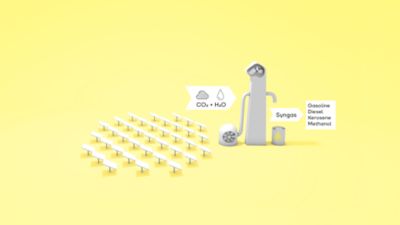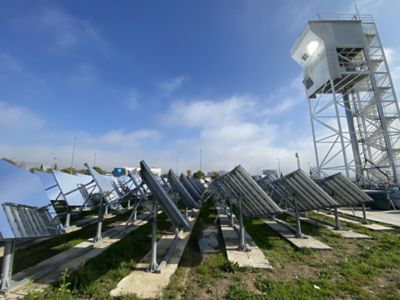-
-
Kostenlose Software für Studierende
Ansys unterstützt die nächste Generation von Ingenieur*innen
Studenten erhalten kostenlosen Zugang zu erstklassiger Simulationssoftware.
-
Verbinden Sie sich jetzt mit Ansys!
Gestalten Sie Ihre Zukunft
Stellen Sie eine Verbindung mit Ansys her, um zu erfahren, wie Simulation Ihren nächsten Durchbruch vorantreiben kann.
Länder und Regionen
Kostenlose Demoversionen
Produkte & Dienstleistungen
Lernportal
Über das Unternehmen
Back
Produkte & Dienstleistungen
Back
Lernportal
Ansys unterstützt die nächste Generation von Ingenieur*innen
Studenten erhalten kostenlosen Zugang zu erstklassiger Simulationssoftware.
Back
Über das Unternehmen
Gestalten Sie Ihre Zukunft
Stellen Sie eine Verbindung mit Ansys her, um zu erfahren, wie Simulation Ihren nächsten Durchbruch vorantreiben kann.
Kostenlose Demoversionen
ANSYS BLOG
January 4, 2022
Fueling Cleaner Transport with the Sun
We all know that the burning of fossil fuels emits large quantities of carbon dioxide (CO2) into the atmosphere from various industries, including the automotive industry. And while most of us recognize the decarbonization benefits of electric vehicles (EVs) and autonomous vehicles (AVs), did you know that a large portion of the electricity used to recharge EV batteries is still produced by burning fossil fuels? It would seem, even with our best sustainability efforts, carbon-emitting fossil fuels are unavoidable — until now. Swiss clean energy company Synhelion is powering toward net-zero emissions with the goal of eliminating fossil fuels altogether.
As a member of the Ansys Startup Program, Synhelion is using Ansys’ multiphysics simulation and high-temperature solar heat to convert CO2 and water into synthetic fuels — such as solar gasoline, diesel, or jet fuel — that are compatible with conventional internal combustion engines and aircraft turbines. Through this approach, Synhelion is swapping the traditional petroleum-based process of creating fuel with a method that uses CO2, water vapor, and heat to transform the fossil fuel industry. Further, the innovative “solar fuels” are carbon-neutral, emitting only as much CO2 as was used during production, which means the amount of CO2 released is drastically reduced and can even near zero when CO2 from uncontaminated air is used during production. Synhelion became a member of the Ansys Startup Program in early 2020 via Ansys’ Swiss Elite Channel Partner, CADFEM.
Too Hot to Handle? Not for Simulation
Synhelion faced numerous design challenges, including monitoring and assessing the radiative heat transfer in molecular gases, aerodynamic flow distribution, water cooling of components exposed to high heat flux, thermal expansion, and thermomechanical analysis.

To perform the conversion, sunlight is reflected by mirrors and concentrated directly onto a solar receiver where a heat-transfer fluid is heated to temperatures as high as 1,500 °C (2,732 °F). The resulting solar heat is then used to power a thermochemical reactor that produces the synthetic fuel. Synhelion used Ansys’ computational fluid dynamics (CFD) and finite element analysis (FEA) software to better understand this complex flow so they could replicate thermo-fluid dynamics to design and validate capable equipment, despite scorching temperatures.
To analyze the stresses due to the thermal expansion of the new receiver front, Synhelion engineers ran an FEA simulation in Ansys Mechanical. As a first step, engineers ran CFD simulations of the individual components in Ansys Fluent to approximate temperatures during sun tests. This included gas flow, heat transfer, and the water-cooled components exposed to high heat flux.

In a second step, these temperatures were then used in Ansys Mechanical to observe the thermal expansion, thermal storage, and resulting stresses through transient simulations of charging and discharging, along with CFD simulations of flow distribution. Next, the team used CFD to simulate heat transfer to and within the reactor tubes to estimate the chemical reaction and syngas — or synthesis gas — production of the thermochemical reactor while computing and analyzing pressure drop calculations across the reformer tubes.
Scalable, Solar Fuel
The resulting solar fuel solves various challenges, including being cleaner, more economic, easier to transport, and it can be stored indefinitely.
“Ansys’ CFD and FEA simulation allows us to develop, test, and validate extremely complex technology to create sustainable solar fuels,” said Lukas Geissbühler, Head of Thermal Systems at Synhelion in a press release. “Particularly, in developing our solar receiver, we needed sophisticated and accurate software and Ansys delivered. Thanks to Ansys’ software, we could reduce prototyping time and build our first industrial receiver more quickly.”
As a result of simulation, Synhelion engineers were able to spot changes in the material of exposed components, such as stainless steel and aluminum, to create higher thermal conductivity and improve water-cooling designs to prevent overheating. Further, Ansys software enabled the Synhelion team to overcome design challenges, predict future outcomes, and reduce prototyping time.
Unlike its competitors, by using concentrated solar energy directly in a thermochemical process, Synhelion can use 100% of the light spectrum, rather than employing photovoltaic (PV) panels, where only 20% of the light spectrum can be utilized. Another distinct factor is that Synhelion’s thermal energy storage technology enables low-cost solar heat round-the-clock — a significant difference from competitors, who require expensive electricity storage for continuous operation.

What’s Next, Solar Sidewalks?
Something like that. Synhelion has had similar success using solar heat to generate cleaner cement, which accounts for approximately 8% of global CO2 emissions and is the second most used material on earth.
During the cement manufacturing process, burning fossil fuels to heat the kiln accounts for one third of the emissions, while two thirds stem from chemical reactions that release CO2 as limestone is processed.
Due to a unique feature of Synhelion’s solar process heat technology, which yields the generated CO2 in concentrated form, Synhelion says it offers the ability to power the cement manufacturing process with solar energy, capturing excess CO2, and ensuring zero emissions are released into the atmosphere.
And Synhelion is expanding its technology and impact even further. After recently raising 16 million Swiss francs (about $17.5 million) in Series B funding, the solar fuel pioneer plans to build the world’s first plant capable of producing solar fuels at an industrial scale in 2022.
To learn more about Synhelion, visit their website.